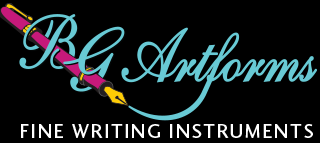Rollerball pens have become a staple in our everyday writing, but their journey to popularity is a fascinating one. In this blog, we’ll explore the origins of rollerball pens, how they’ve evolved over the years, and what makes them the preferred choice for many writers today. Whether you’re a student, a professional, or just someone who appreciates a good pen, understanding the history behind rollerball pens enriches our writing experience.
The Birth of Rollerball Pens
Rollerball pens trace their roots back to the 1960s when the need for smoother writing instruments became evident. Before their invention, the dominant writing tools were ballpoint pens, which used oil-based ink that often felt scratchy on paper. This discomfort sparked the quest for a pen that could enhance writing experience without compromising speed or fluidity.
In 1963, the Japanese company Ohto introduced the first commercially successful rollerball pen, which used water-based ink. This innovation allowed for a smoother flow of ink, making writing a more pleasant experience. The uniqueness of the rollerball pen lies in its ability to combine the ease of a fountain pen with the reliability of a ballpoint. Writers soon discovered that rollerball pens could create vibrant lines with less pressure, making them the preferred tool for many.
As rollerball pens gained popularity, their design evolved to meet the diverse preferences of users. Various materials, colors, and styles emerged, leading to a wide array of choices on the market. The rollerball’s success didn’t stem solely from its mechanics; it also became a statement piece. Many enthusiasts started to see rollerball pens as more than just writing instruments—they became a part of personal expression and identity.
How Rollerball Pens Work
Understanding how rollerball pens function is crucial for appreciating their advantages over other writing tools. The mechanism of a rollerball pen is deceptively simple yet highly effective, involving a tiny ball at the tip that rotates as you write. This ball is crucial because it transfers the ink from the reservoir to the paper with minimal friction.
The ink used in rollerball pens is typically water-based, which allows it to flow smoothly and dry quickly. This characteristic makes rollerball pens suitable for various writing surfaces without the risk of smudging or clumping. Many users find that water-based ink creates vibrant, saturated lines that enhance their written work.
Moreover, rollerball pens often feature a comfortable grip and a refined tip size, contributing to a pleasurable writing experience. The combination of the ball mechanism and the low-viscosity ink finetunes the writing process, allowing for both control and freedom. This technology is what sets rollerball pens apart, making them a preferred choice for those who value both comfort and efficiency.
Key Milestones in the Evolution of Rollerball Pens
The journey of rollerball pens is marked by significant milestones that have defined its evolution. The initial introduction of the pen in the 1960s was just the beginning. One of the key milestones occurred in the 1970s when innovation in the pen industry began to flourish. Brands like Uni-ball and Pilot introduced advanced rollerball designs that further refined the writing experience.
During the 1980s and 1990s, rollerball pens continued to evolve with the introduction of hybrid models. These pens combined the qualities of traditional rollerballs and ballpoint pens, allowing for smooth writing while maintaining the reliability of oil-based ink. This period also saw the rise of promotional rollerball pens, which gained popularity in corporate gifting.
Another pivotal moment came with the rise of technology in the 2000s, leading to the creation of more sophisticated ink formulations and ergonomic designs. The advent of refillable rollerball pens allowed users to enjoy the longevity of their favorite writing instrument without compromising on quality. Today, designers continue to innovate, resulting in unique products that cater to the needs of various writing styles and preferences.
Popular Brands and Models of Rollerball Pens
Many brands have emerged as leaders in the rollerball pen market, offering a diverse range of options for discerning users. One of the most renowned brands is Pilot, known for its precise engineering and high-quality writing instruments. The Pilot Precise V5 is often celebrated for its fine tip and smooth ink flow, making it a favorite among students and professionals alike.
Uni-ball is another significant player, particularly appreciated for its innovative features that prevent ink smudging and fading. Their Vision Elite series combines convenience with durability, making it an ideal choice for those seeking reliability in their writing tools. For enthusiasts who prefer luxurious options, brands like Montblanc and Lamy offer rollerball pens that embody elegance and craftsmanship, appealing to those who value aesthetics as much as functionality.
In the world of customizable products, brands like Cross allow users to personalize their pens, creating a unique writing experience that reflects individual style. As a result, selecting a rollerball pen now goes beyond functionality; it has become an opportunity for expression and a way to showcase personal taste.
The Continued Popularity of Rollerball Pens Today
In today’s fast-paced world, where digital communication often reigns supreme, rollerball pens continue to hold a cherished place. The tactile experience of writing with a rollerball pen provides a sense of connection that screens simply can’t replicate. Many individuals find comfort in physically writing notes, journaling, or signing documents, making rollerball pens a necessary tool for many.
The increased focus on personal wellness in recent years has also contributed to the resurgence of analog writing tools. Many people view writing as a meditative practice, and the smooth glide of a rollerball pen enhances this mindfulness. As a result, users appreciate the moment of pause in their busy lives while jotting down thoughts, lists, or simply doodling.
Furthermore, educational institutions and businesses continue to endorse the use of rollerball pens for their exceptional writing capabilities. Teachers often recommend them for students, as they create a more efficient writing experience, encouraging better learning outcomes. Businesses, too, recognize rollerball pens as a reliable choice for professional communication, reinforcing their status as an essential tool for both personal and professional use.
Why Choose a Rollerball Pen Over Other Pens?
Selecting a writing instrument can be a daunting task given the myriad of options available today. However, rollerball pens stand out for several compelling reasons. Firstly, their unique ink composition allows for a smoother writing experience that many other pens simply cannot match. The watery ink flows effortlessly, requiring less pressure, which can be particularly beneficial for those who may have hand fatigue.
Additionally, the versatility of rollerball pens makes them an appealing choice for a variety of writing tasks. Whether you’re drafting a letter, sketching ideas, or signing important documents, the rollerball can handle it all with grace and precision. Unlike fountain pens that require maintenance or ballpoint pens that can skip, rollerballs offer instantaneous gratification, making them ideal for busy lifestyles.
Finally, the aesthetic appeal of rollerball pens cannot be overlooked. Available in numerous designs, materials, and colors, these pens provide users with options that match their personal style. The blend of functionality, comfort, and elegance makes rollerball pens not just a writing tool, but a statement piece in personal and professional settings. It’s no wonder that so many individuals choose rollerball pens for their writing needs.
The Lasting Impact of Rollerball Pens
The evolution of rollerball pens reflects the innovative spirit of design and function in the writing instrument world. As we continue to embrace technology and creativity, rollerball pens remain a cherished tool for many. They combine fluidity, precision, and comfort, making them an essential companion for all our writing needs. In appreciating their history, we also celebrate the artistry and craftsmanship that goes into creating these beloved implements.


